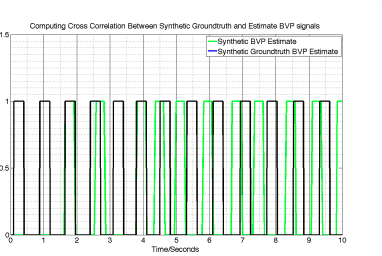I am trying to produce a box function filter of a signal in python. I expected to find this functionality in scipy.signal, but I can't find any solutions. What I am trying to do is this.
I have 2 signals that look like this:

I have the peaks plotted for both of the signals, as you can see. I am trying to create a box function filter so that I can get a result like this:
Here, the two signals are filtered so that that peaks are centered in a constant variable window, lets say 5.
You can also see that signals are normalized so that all maxima are 1 and all minima are 0. Is there any prebuilt solution for this?
EDIT
I'm getting closer to figuring it out, but I keep having trouble. Here is my code so far:
raw_signal = [0.04583763329719659,
0.04805497846973594,
0.04829505014640745,
0.05887341212655883,
0.05002700454497244,
0.03658229798020329,
0.03785355329455342,
0.041801968109211884,
0.02233076920674648,
0.058624423036235385,
0.04285942959540989,
0.05198790422582533,
0.07342396020248998,
0.05624460427497979,
0.053187046069069766,
0.05705776529794093,
0.055122999401646666,
0.03843830454570707,
0.05200852137932088,
0.057458145238342695,
0.04733597124868538,
0.07260882812261116,
0.05444879316200968,
0.06107602057454642,
0.05144282440596726,
0.03842927653749939,
0.062157345746527426,
0.049414162276661955,
0.06244672513275873,
0.026325066210119985,
0.049222807501791976,
0.048303400035365485,
0.033270250060013495,
0.06265669035201427,
0.0464532491605496,
0.04716381918115076,
0.05001360514143016,
0.04871139499300625,
0.03684319926833268,
0.06930899362487253,
0.04683942206611391,
0.053229054537951015,
0.05761049069405999,
0.06470925254689064,
0.0671662015520269,
0.04771008352690842,
0.06945096065464895,
0.016286753452732228,
0.05102230607008096,
0.01769710761436727,
0.06242152849154081,
0.019350205184309743,
0.03038432296307292,
0.0609150647505885,
0.05489945724548306,
0.05819547914143186,
0.026275048367097043,
0.015321600585593842,
0.05769180825154763,
0.04853383834415581,
0.04002726600447204,
0.03246579690312501,
0.05159124229976442,
0.04558678156172391,
0.04065268985868897,
0.05376688459364232,
0.03983559690823313,
0.02996508228534367,
0.024953327010734938,
0.05553271730605047,
0.04297505620343145,
0.05980710957373958,
0.04593995363393333,
0.05778656013717409,
0.040827999691828154,
0.019963644081144594,
0.051858118604286574,
0.06540824360854458,
0.05649360937240999,
0.04654800250136759,
0.05910070285608526,
0.058185853049508296,
0.05541932878259104,
0.04814119565708097,
0.015593319767504,
0.0365044306818163,
0.06034806101524737,
0.037100095869391225,
0.054988950068945996,
0.02537936052249279,
0.031081240376806818,
0.06072348878660705,
0.011991354040219449,
0.044582271584658884,
0.060200185907888226,
0.040700219324207865,
0.04851865196542349,
0.056848127496778034,
0.03311677974124905,
0.05129374585521873]
def make_chunks(lst, n):
"""Yield successive n-sized chunks from lst."""
chunks = []
for i in range(0, len(lst), n):
chunks.append(lst[i:i + n])
return chunks
def get_local_max_min(windowed_chunks):
max_coords = []
min_coords = []
original_idx = 0
for i in windowed_chunks:
local_maxima = max(i)
local_minima = min(i)
local_max_idx = i.index(local_maxima) + original_idx
local_min_idx = i.index(local_minima) + original_idx
local_max_coords = [local_max_idx, local_maxima]
local_min_coords = [local_min_idx, local_minima]
max_coords.append(local_max_coords)
min_coords.append(local_min_coords)
original_idx += window
return max_coords, min_coords
def join_and_sort_coords(max_coords, min_coords):
coord_lst = max_coords + min_coords
coord_lst = sorted(coord_lst, key=lambda x: x[0])
return coord_lst
def box_filter(coord_list, box_filter_span):
box_filter_list = []
for i in coord_list:
mod_val = ([i[1]]*box_filter_span)
box_filter_list.append(mod_val)
box_filter_list = [item for sublist in box_filter_list for item in sublist]
return box_filter_list
def plot_signals(raw_signal, max_coords, min_coords, box_filter_list):
plt.figure(figsize=(20,10))
# plt.plot(raw_signal)
plt.plot(box_filter_list)
for x,y in max_coords:
plt.plot(x,y, color='red', marker = 'o')
for x,y in min_coords:
plt.plot(x,y, color='green', marker = 'o')
window = 10
box_filter_span = 5
windowed_chunks = make_chunks(raw_signal, window)
max_coords, min_coords = get_local_max_min(windowed_chunks)
coord_list = join_and_sort_coords(max_coords, min_coords)
box_filter_list = box_filter(coord_list, box_filter_span)
plot_signals(raw_signal, max_coords, min_coords, box_filter_list)
Which produces this:
This is wrong because it should alternate max-min-max-min and so on, like in the second plot. You can see my plot breaking at the 3rd minima.


